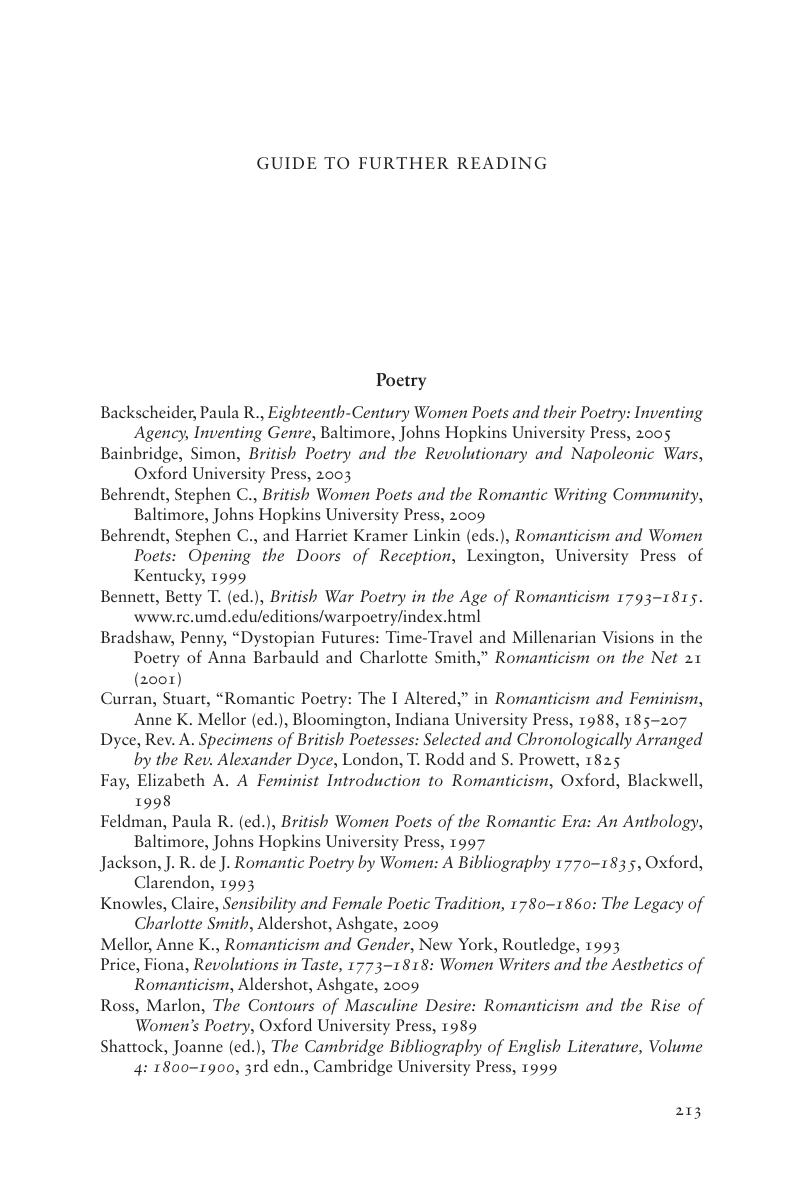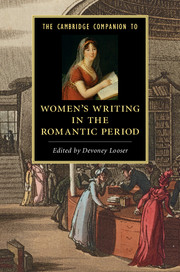Book contents
- Half title page
- Title page
- Copyright page
- Contents
- Contents
- Contributors
- Preface
- Book part
- Chronology
- 1 Poetry
- 2 Fiction
- 3 Drama
- 4 Essays and political writing
- 5 The Gothic
- 6 Travel writing
- 7 History writing and antiquarianism
- 8 Writing in wartime
- 9 Enlightenment feminism and the bluestocking legacy
- 10 The global context
- 11 Social, familial, and literary networks
- 12 The economics of female authorship
- 13 Age and aging
- 14 National identities and regional affiliations
- 15 Sexualities
- Bibliography
- Index
- Cambridge Companions to …
- References
Bibliography
Published online by Cambridge University Press: 05 March 2015
- Half title page
- Title page
- Copyright page
- Contents
- Contents
- Contributors
- Preface
- Book part
- Chronology
- 1 Poetry
- 2 Fiction
- 3 Drama
- 4 Essays and political writing
- 5 The Gothic
- 6 Travel writing
- 7 History writing and antiquarianism
- 8 Writing in wartime
- 9 Enlightenment feminism and the bluestocking legacy
- 10 The global context
- 11 Social, familial, and literary networks
- 12 The economics of female authorship
- 13 Age and aging
- 14 National identities and regional affiliations
- 15 Sexualities
- Bibliography
- Index
- Cambridge Companions to …
- References
Summary

- Type
- Chapter
- Information
- Publisher: Cambridge University PressPrint publication year: 2015



